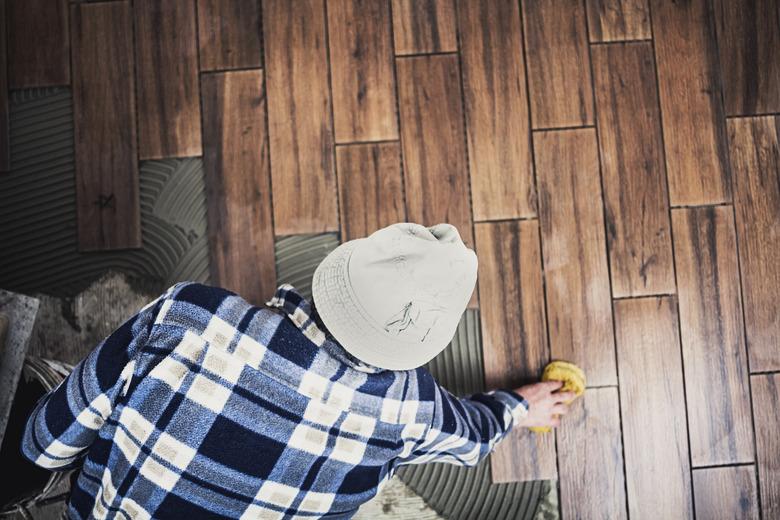How Do I Lay 12x24 Tiles?
Large format tiles, such as a 12x24 inches, are becoming popular in today's modern homes. Aside from the design variety, this rectangular tile can fill up space more efficiently, so you don't need as many pieces as the smaller-sized tiles.
Suitable for floor and wall use, 12x24 tiles need fewer grout lines, as well, so there is little maintenance or cleaning required. Large format tiles lend a contemporary edge to any space. It makes a smaller space look bigger.
Tip
12x24 tiles should be laid in a fairly thick mortar bed so each tile can be adjusted flush with the other to avoid lippage. Choose tile direction according to the size of the room.
Avoid Tile Lippage Before Tiling
Avoid Tile Lippage Before Tiling
It is important to prepare the surface where you plan on placing the tiles properly first to ensure that the completed project won't have a tile lippage. This may happen due to an uneven surface that causes the tiles to rise or warp. It may also happen because the tiles haven't been spaced in the layout properly or the grout lines and adhesive were not applied correctly.
You will specifically need a medium bed mortar for 12x24 tiles. This adhesive has a better consistency compared to the thinset. Medium bed mortar is made up of water, cement, coarse sand and other compounds, so you won't end up with loose tiles when everything dries up.
However, if you want to use a thinset for porcelain tiles, pick out the modified kind for the most bonding coverage. If you use a non-modified thinset, you will still need to mix it with latex polymer, which will only prolong the process.
Choose the Tile Direction Well
Choose the Tile Direction Well
A horizontal orientation with a 1/3 offset tile floor is best for rectangular tiles. Its direction is similar to a brick wall, where the longer side is across the surface. This creates a more pleasant layout and makes the room look wider.
For a much smaller space, such as the bathroom, it's best to lay down the tiles the long way, where the longer side is set vertically. Visually, a long and narrow direction lengthens a small room.
Installing the Tiles
Installing the Tiles
When the subfloor is all set and when you've figured the tile direction, you can now start with the application of the mortar using a flat margin trowel and a 1/2 inch notched trowel. The mortar must be thick enough so that it will be easy to level off.
Apply some mortar on the back of the tile, as well, as if you're buttering the surface so that the tile will bond better to the floor. Always clean as you move along with each tile. You need this application to be flawless.
Next, use 1/4 inch spacers for the grout lines and use sanded grout for floors with large format tiles. As far as aesthetics are concerned, you might want to consider a darker grout for busy areas like the kitchen.
Finally, you must always put a grout sealer on tiles where moisture is always present. If you use epoxy-based grout, however, you may skip this process.
